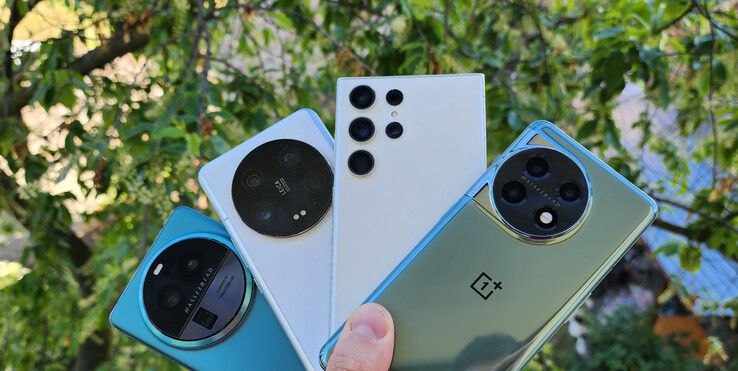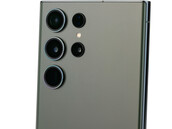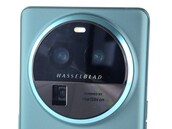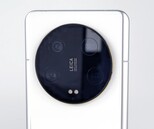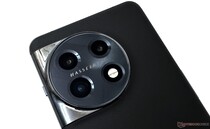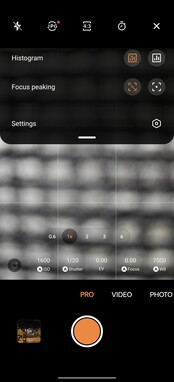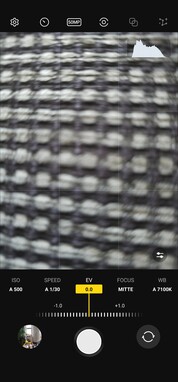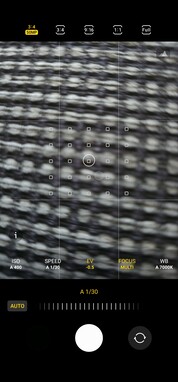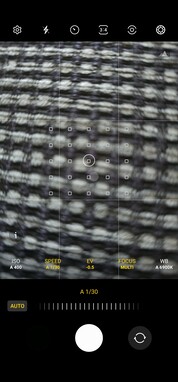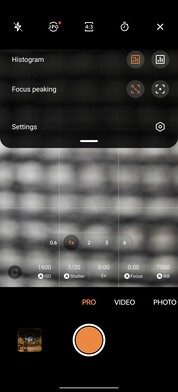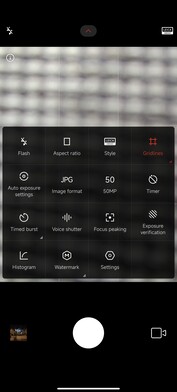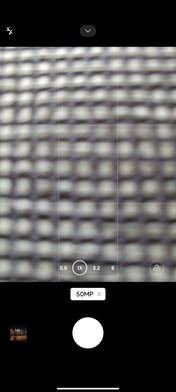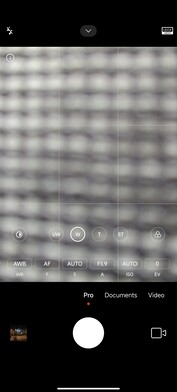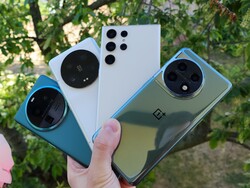The best camera phones of 2023 reviewed - Middle Kingdom smartphones strike back?
Our camera test at the beginning of this year already showed how Samsung didn't quite get the most out of their new 200-MPix camera with its 50-MP mode. As soon as the Korean flagship phone's software - especially with regard to HDR and lighting - works as well as the 16-to-1 pixel binning results, then the sensor's extremely high resolution could just be enough to push the phone to the top of the ranking. However, the Xiaomi 13 Ultra and Oppo Find X6 Pro are both new models that use the 1-inch Sony IMX989, and which were developed in close collaboration with renowned camera manufacturers.
To complete the camera quartet is the comparatively inexpensive OnePlus flagship, the OnePlus 10 Pro's successor. We decided against the Huawei P60 Pro due to its well-known problems around Google services and 5G connectivity. In actuality, it really should have earned a place in the lineup because of its automatic aperture control and excellent image quality. The Vivo X90 Pro+ also has quite an exciting camera package - we would definitely recommend taking a look at our detailed individual review.
Price-wise, the flagship smartphones lay quite close together - only the OnePlus 11 is considerably cheaper, with an MRSP of just under $1,000 and current asking price of around $700.
| Samsung Galaxy S23 Ultra | Oppo Find X6 Pro | Xiaomi 13 Ultra | OnePlus 11 | |
|---|---|---|---|---|
| Camera setup: Back | 200 MPix (f/1.7, OIS, 1/1.3” sensor ISOCELL HP2) | 50 MPix (f/1.8, 23 mm, OIS, 1″ sensor Sony IMX989) | 50 MPix (f/1.9, f/4.0, 23 mm, OIS, 1″ sensor Sony IMX989) | 50 MPix (f/1.8, 24 mm, OIS, 1/1.56″ sensor Sony IMX890) |
| Tele-lens(es) | 10 MPix (f/2.4, 69 mm, OIS, 3x optical) + 10 MPix (f/4.9, 11°, 230 mm, OIS, 10x optical, 100x max) | 50 MPix (f/2.6, 65 mm, OIS, 3x optical, 100x max) | 50 MPix (f/1.8, 75mm, OIS, 3,2x optical) + 50 MPix (f/3.0, 120mm, OIS, 5x optical, 120x max) | 32 MPix (f/2.0, 48 mm, 2x optical, 20x max) |
| Ultra-wide angle | 12 MPix (f/2.2, 13 mm, 120°) | 50 MPix (f/2.2, 15 mm, OIS), 110°) | 50 MPix (f/1.8, 12 mm, 122°) | 48 MPix (f/2.2, 12 mm, 115°) |
| Camera setup: Front | 12 MPix (f/2.2, 25 mm) | 32 MPix (f/2.4, 21 mm) | 32 MPix (f/2.0, 22 mm) | 16 MPix (f/2.4, 25 mm) |
| Software version | S918BXXU1AAWC8 | PGEM10_13.1.0.130 | 14.0.11 | 13.1.0.501 |
All of the phones in this test use a method called pixel binning, where the true length of each pixel is mathematically enlarged. The Galaxy S23 Ultra uses its 200 megapixel ISOCELL HP2 sensor to fuse up to 16 individual pixels together to one big monster pixel. Alternatively, the high-end phone uses a classic 4-to-1 fusion - the same as can be seen on the OnePlus 11, Xiaomi 13 Ultra and Oppo Find X6 Pro. Compared to the Samsung flagship, these phones use much larger native pixels.
For our test photos, we used each phone's camera software to its full "intelligence", meaning HDR and AI algorithms were activated in order to squeeze the biggest potential out of each photo automatically. The images generally don't represent the camera sensors' resolutions - instead, they are processed to an optimized 12.5-MP photo (or in the Samsung Galaxy S23 Ultra's case, to an additional 50-MP photo). On the Xiaomi phone's camera software, we selected the Leica mode "Vibrant".
direct comparison of the flagship smartphones' cameras
Please note: In order to better differentiate image details between the different test devices, all image files are stored with the corresponding photos. To access these, simply click on the corresponding photo in the comparison element.
The flagship smartphones' main cameras
Unsurprisingly, the images taken using the main cameras in daylight were all very good - even on the OnePlus 11. Unfortunately, on the Samsung flagship, we were missing the same levels of detail which can be seen on the Xiaomi 13 Ultra - the latter shows fewer fuzzy structures, for example on the cobble stones which can be seen on the house image. The Galaxy S23 Ultra's images were a little grainy and artificially sharpened, while its competitor with a Sony IMX989 manages to capture the scene a little more naturally. Admittedly, the Oppo Find X6 Pro showed a little too much soft focus for our taste, as we already noted during our individual review. Here, the Xiaomi 13 Ultra showed much nicer sharpness levels. But even the OnePlus 11 with its nominally weakest camera sensor (Sony IMX890) delivered tasteful sharpness levels without over-sharpening our subjects.
When it comes to colors, the Galaxy S23 Ultra delivered the most natural-looking photos all-in-all. Our carrot was depicted nice and orange and the little horse didn't appear as blindingly red as on the Xiaomi 13 Ultra or the OnePlus 11. Especially its white balance is impressive on the Xiaomi flagship - sometimes, the Samsung and Oppo smartphones show white tones as being beige due to their somewhat warm color calibration.
Comparing Samsung's 12.5 MPix and 50 MPix modes makes it obvious what a complicated computing process pixel binning technology can be. Unfortunately, even months after releasing their flagship, the Korean manufacturer still hasn't managed to utilize the high-resolution ISOCELL HP2 to its full potential. The Galaxy S23 Ultra shows much more image content and better depth of field than its competitors when using 4-to-1 binning, but it is still missing software optimizations. In particular its HDR effects work much better using 12.5-MP mode and oftentimes, the lighting in 50-MP photos is too dark.
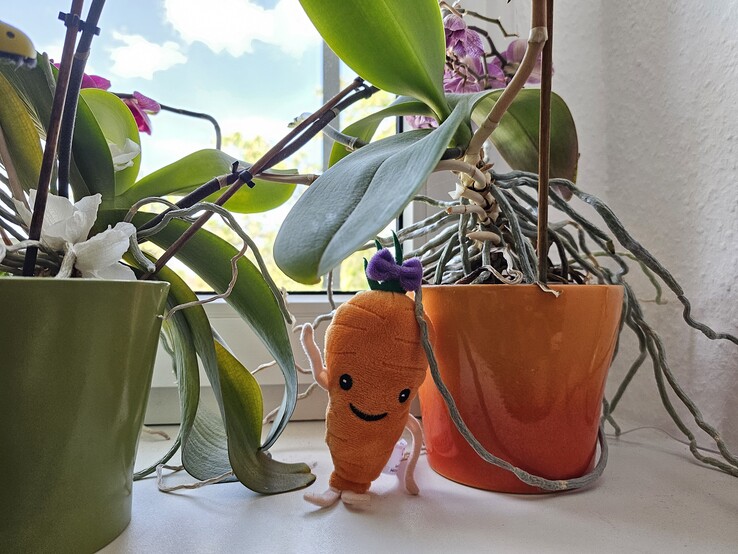
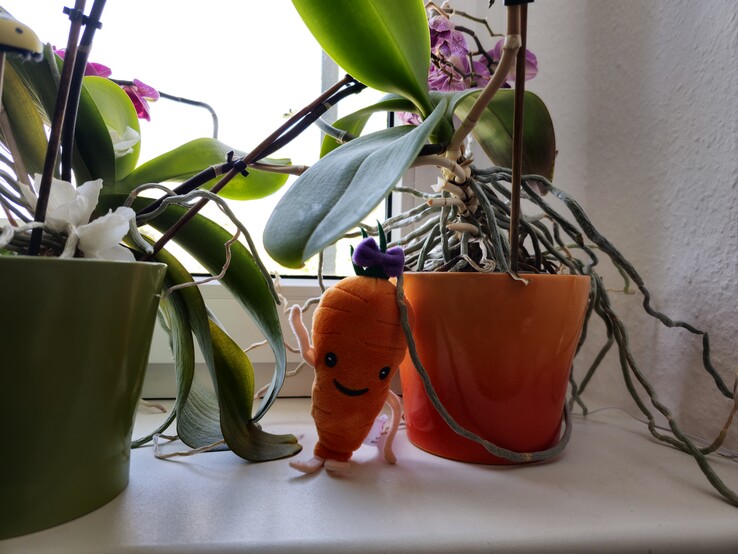
Comparison: Pixel binning in daylight - Samsung Galaxy S23 Ultra: 50 MPix (right) vs. 12.5 MP (left)
The Samsung Galaxy S23 Ultra's 12.5-MPix mode
The Samsung Galaxy S23 Ultra's 50-MPix mode
Casting a glance at the supreme discipline - nighttime photography - the OnePlus 11 actually did surprisingly well compared to the other tested devices with its 1/1.56-inch image sensor. The cheapest phone by far, it didn't quite deliver low-light photos comparable with the Find X6 Pro, but even so, we were big fans of its sharpness and illumination. Admittedly, especially on the street photos, the OnePlus struggled quite a bit with fuzzy detailing.
It became quite difficult to evaluate the Xiaomi 13 Ultra, as quite often a certain amount of fuzziness managed to creep into the phone's images and the street photo's colors were even interpreted wrongly. On the other hand, the Xiaomi depicted our unicorn photo the best. Its super-short release time during darkness is also a positive aspect on the 13 Ultra - here, we didn't notice that big a difference to daylight photography. This is the opposite of the Galaxy S23 Ultra, which sometimes takes up to 3-4 seconds if there are insufficient levels of light surrounding it.
All-in-all, however, we liked the Samsung flagship's nighttime images the most. Little grain, good illumination and lots of detail are all things that speak for the Galaxy S23 Ultra when using 16-to-1 binning mode.
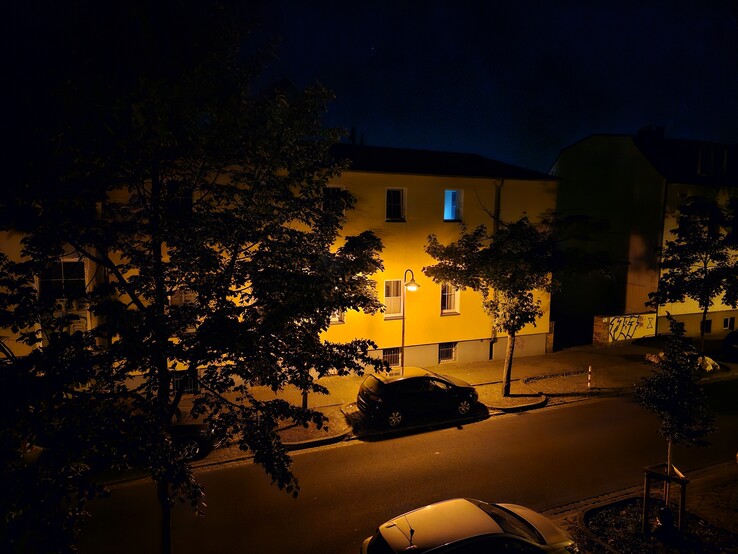
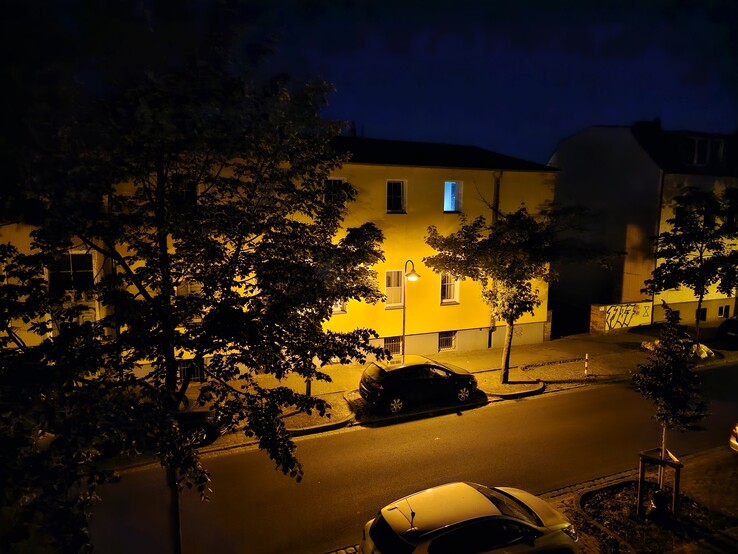
Comparison: pixel binning at night - Samsung Galaxy S23 Ultra: 50 MPix (right) vs. 12.5 MP (left)
The flagship phones' ultra-wide angle lenses
It becomes instantly noticeable how ultra-wide angle photos taken on the Find X6 Pro are less wide-angle than its competitors - especially the Xiaomi 13 Ultra shows a much broader field of view. In turn, the Oppo flagship showed better sharpness levels in daylight - especially toward the image corners, where the software did a great job at keeping the smallest structures on the images. The Xiaomi 13 Ultra also performed well with its good image quality - although, outside of the centre of the images, its sharpness levels are disappointing. The same can be said for the OnePlus 11, which can thankfully still keep up with the Xiaomi flagship when lighting conditions are good.
The Galaxy S23 Ultra was a little worse off in this comparison. Its sharpness levels could definitely be a bit better and images had a tendency to be a bit grainy toward the edges. The Korean manufacturer should really release a camera software update to rectify this issue as soon as possible.
This role allocation changes with an increase in darkness. In low-light conditions, the Samsung phone scraped out lots of image detail using its camera algorithm. The same as with their main lenses, all the phones we tested use pixel binning methods for their ultra-wide angle lenses, too - meaning more light and, as a result, more image information can be captured by the lenses. The Oppo Find X6 Pro also did a great job and showed decent sharpness levels with little grain - but in total, the Galaxy phone still reigned supreme.
The Xiaomi 13 Ultra's nighttime shots simply cannot keep up with those taken during the day. The images were often blurry and you could barely identify any fine structures. The lantern shown in our street photo also didn't have the most accurate color depiction.
Image Comparison
Choose a scene and navigate within the first image. One click changes the position on touchscreens. One click on the zoomed-in image opens the original in a new window. The first image shows the scaled photograph of the test device.
HouseShelfDollLow light - UnicornLow Light - LanternThe flagship phones' macro shots
Next to wide-angle images, our phones' ultra-wide angle lenses are also capable of taking macro photos. If you enjoy macro photography in your day-to-day life, then you will be better equipped with the high-end Oppo and Samsung phones, as you can get much closer to your subject with these phones than with the Xiaomi 13 Ultra. Of course, you shouldn't be expecting to be able to take any microscopic photos on any of the flagship phones.
The flagship phones' zoom shots
In the field of zoom photography, we focused on realistic zoom levels (3x, 5x, 10x, 20x) which will yield decent quality photographs in everyday use. Due to hardware deficits, the OnePlus 11 and the Find X6 Pro fell behind compared to the Xiaomi 13 Ultra and Galaxy S23 Ultra when it came to zoom levels over 10x. However, the Oppo flagship delivered great results using the lossless 3x zoom function. It is only in the larger zoom range that the X6 Pro starts to struggle.
It is precisely this 3x zoom that the Galaxy S23 Ultra and 13 Ultra struggle a bit with - although the Xiaomi flagship did great in our 5x zoom images. The Samsung phone only began to yield sharp results from the 10x zoom mark. Both flagships work within their own leagues - sometimes one is better, sometimes the other. At 20x zoom, both smartphones' hybrid zooms deliver amazingly good results in daylight. In all things stabilization, the Galaxy S23 Ultra and the 13 Ultra also outperformed the rest, which means that subjects can still be captured effortlessly at 100x zoom.
As soon as the zoom images were taken in darker lighting conditions, their quality began to dip. Even so, the Oppo Find X6 Pro and the Xiaomi 13 Ultra still delivered decent sharpness levels at 5x zoom. The Galaxy S23 Ultra struggled a bit with grain - as can be seen on the street photo - but together with the Xiaomi flagship, it showed a lot of potential for usable low-light photography using 10x zoom.
The flagship phones' front-facing cameras
With regard to sharpness and image detail, the Galaxy S23 Ultra's front-facing camera was the best among the Android flagships. Our selfie photos showed that the Samsung phone portrayed fine facial structures well, whereas the Xiaomi 13 Ultra airbrushed quite a few smaller wrinkles - even without beauty mode activated. The OnePlus 11 and Find X6 Pro fell somewhere in between: They both didn't smooth out their images as much. Although, the OnePlus' colors were a little too red and the Xiaomi depicted faces a little too pale. In terms of color accuracy, Samsung achieved the most natural calibration in our eyes.
The flagship phones' software
When it comes to camera software, the OneUI on the Galaxy S23 Ultra has the highest levels of individual optimization options and settings to offer. Next to a Pro Mode for photography, the Samsung flagship also features a dedicated Camera Assistant and a Pro Mode for RAW images. The latter format can be taken natively on every one of our phones' camera apps.
The Xiaomi 13 Ultra also has an extra Pro Mode, which has many different settings that can be customized to fit your personal needs. Furthermore, you can access the sensor's full resolution even in Pro Mode, which remains unavailable on all of the other devices we tested. Both the Oppo Find X6 Pro and the OnePlus 11's camera softwares have very similarly built Pro Modes - this is no big surprise, as both user interfaces are based on a unified code base called Unified OS, in which Oppo and OnePlus' smartphone operating systems have been fused together.
Verdict - Flagship phone camera test
This year, the best phone camera's performances remain very similar - although, the Sony IMX 989 and the Samsung ISOCELL HP2 both take different approaches. We aren't able to determine one perfect camera smartphone, as each individual phone of 2023 has different weaknesses and there isn't a single one that triumphs in all disciplines.
In the fight to become camera king, Oppo's flagship smartphone simply cannot keep up with the rest due to its main camera's inconsistent image sharpness and lack of detail at higher levels of zoom. If you take lots of photos using your smartphone, you are likely to have a lot of fun with its sister model, the OnePlus 11 - even if it is a lot cheaper than the Find X6 Pro.
Every flagship phone has different weaknesses. Thus, we are unable to identify a clear allrounder when it comes to cameras.
The Samsung Galaxy S23 Ultra and Xiaomi 13 Ultra clearly offer the most comprehensive camera package in total - even though both phones can't entirely shield themselves from critique. Both show nice levels of sharpness and detailing in daylight. While the Xiaomi phone suffers from some slight deficits in color depiction when taking selfies, the Samsung phone often fights with grainy structures and the image information could be a little more pronounced in daylight as well.
Unfortunately, the new 50-MP mode during daylight is still nowhere near as good as 16-to-1 binning - although, the very small sensor pixels' deficits shouldn't prove to be too big an issue. We will see how well the classic 4-to-1 fusion works with the new 200-MPix sensor at the latest with the release of the Galaxy S24 Ultra. If Samsung don't manage to improve their HDR and lighting deficits in order to keep up with the 1.5-MPix JPEG processing results, then that might just be enough for the South Korean flagship to miss out on winning the battle.
Haven't found your perfect smartphone? Still on the hunt for a good camera phone? Then you should take a closer look at our list of the best photo smartphones - here, you can find a regularly updated list of the 10 best camera phones taken from our reviews.
Prices at the time of testing
Most of the phones we tested can be found at major retailers such as Amazon.
The Samsung Galaxy S23 Ultra has a price of $1,154.99.
The Oppo Find X6 Pro currently can't be found online, but you can take a look at its predecessor here.
The Xiaomi 13 Ultra can be found for $999.
The OnePlus 11 can be purchased for $699.99.


 Deutsch
Deutsch English
English Español
Español Français
Français Italiano
Italiano Nederlands
Nederlands Polski
Polski Português
Português Русский
Русский Türkçe
Türkçe Svenska
Svenska Chinese
Chinese Magyar
Magyar